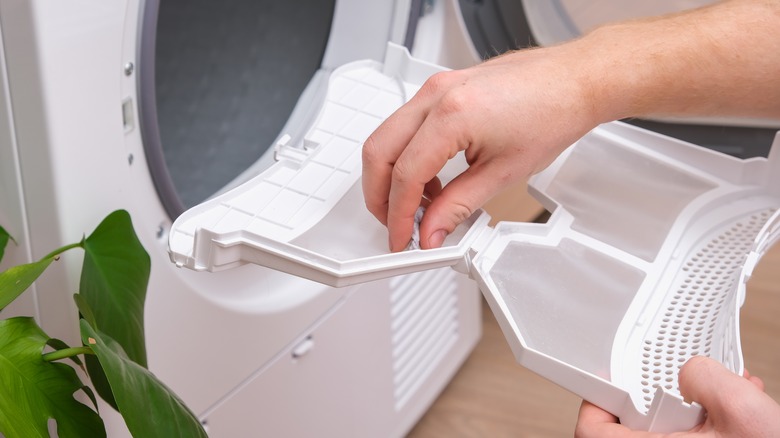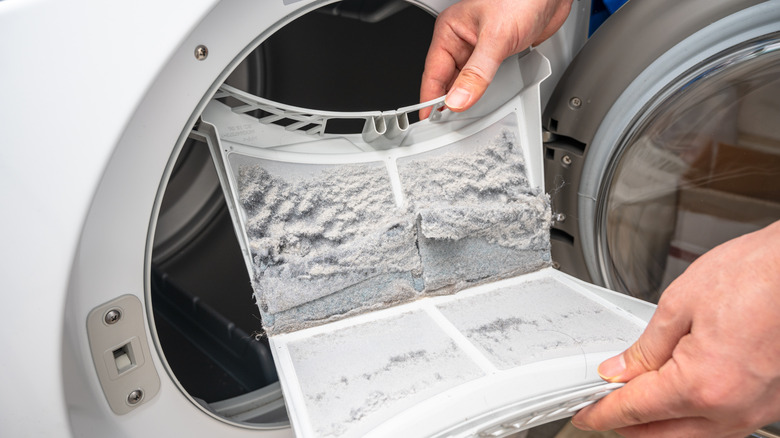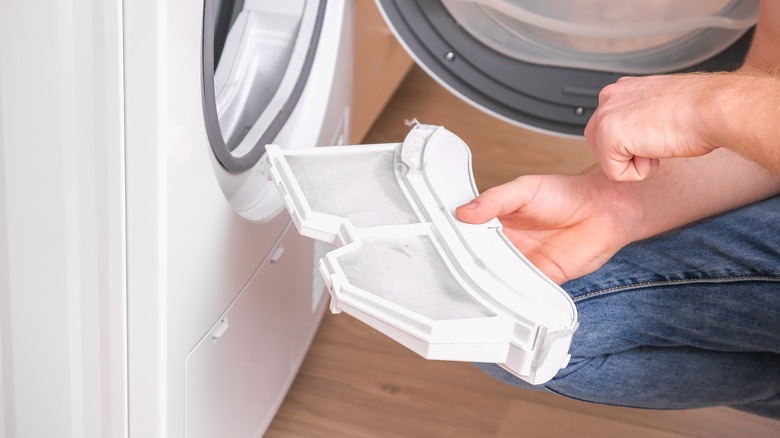Why It's So Important To Clean The Lint From Your Dryer After Every Load
Whether you love it or hate it, laundry is an inevitable and reoccurring chore. There are a few ways to accomplish the task, whether you machine wash, hand wash, dry clean, or spot clean your clothing. Once clean, you have two options for drying — by air or machine.
Old school machine dryers, most commonly referred to as ventilators, were just that — big metal drums with lots of ventilation holes and a hand crank, which would rotate the clothes over a heat source like a fire, per Ezine Articles. Ventilators were invented in the 1700s, but electric dryers didn't hit the market until 1938, and they became a much more popular and efficient method of drying for those that could afford them post-World War II. Nowadays, our tumble dryers are incredibly efficient and much safer than models of the past. While it may seem as simple as chucking your wet clothes in the dryer and pressing start, there are some maintenance and safety precautions to take regularly, like cleaning the lint trap.
Fire hazard
When you wash your clothes, loose fibers from the fabric you run through, also known as lint, are going to be agitated, and some will be removed and rinsed out. However, many more of those fibers are going to stick behind, and won't be released until they're dried in the dryer, explains Twist 'N Turn Dryer Vent Cleaning.
That lint goes two places — the exhaust system and dryer vent, and the lint trap. The exhaust system and vent require attention and maintenance, but for daily use, you only need to focus on your lint trap. This is usually located near the dryer door, but placement varies dryer by dryer. There are a few reasons why it's a good idea to clean the trap after each load, but the most pressing is the risk of fire. Mr. Appliance warns that lint is very flammable, and with the high heat and heating elements inside a dryer, there's a very real risk that the lint could catch fire.
How to clean the lint trap
You should be cleaning your lint trap after every single use, no matter how little is deposited during the drying cycle. Luckily, the process is incredibly easy and should only take seconds. Per Whirlpool, remove the trap entirely, and use your hand to gather the lint. Lint sticks to itself, so you should be able to roll it up like a snowball. Discard in a trashcan.
While this is fine for a quick clean, you should also take care to deep clean the lint screen once every six months or so. Not only can lint get packed into the fine mesh, but if you use fabric softener or dryer sheets, it'll build up on the lint screen. Remove the lint trap entirely, and use hot water, detergent, and a nylon scrubbing brush to gently but firmly clean the mesh. Pat the trap dry and let it air dry before moving on to the next step. Next, grab either a handheld vacuum or one with a hose attachment, and vacuum the inside of the trap that's attached to the dryer. Once the trap is dry, slot it back into place.


